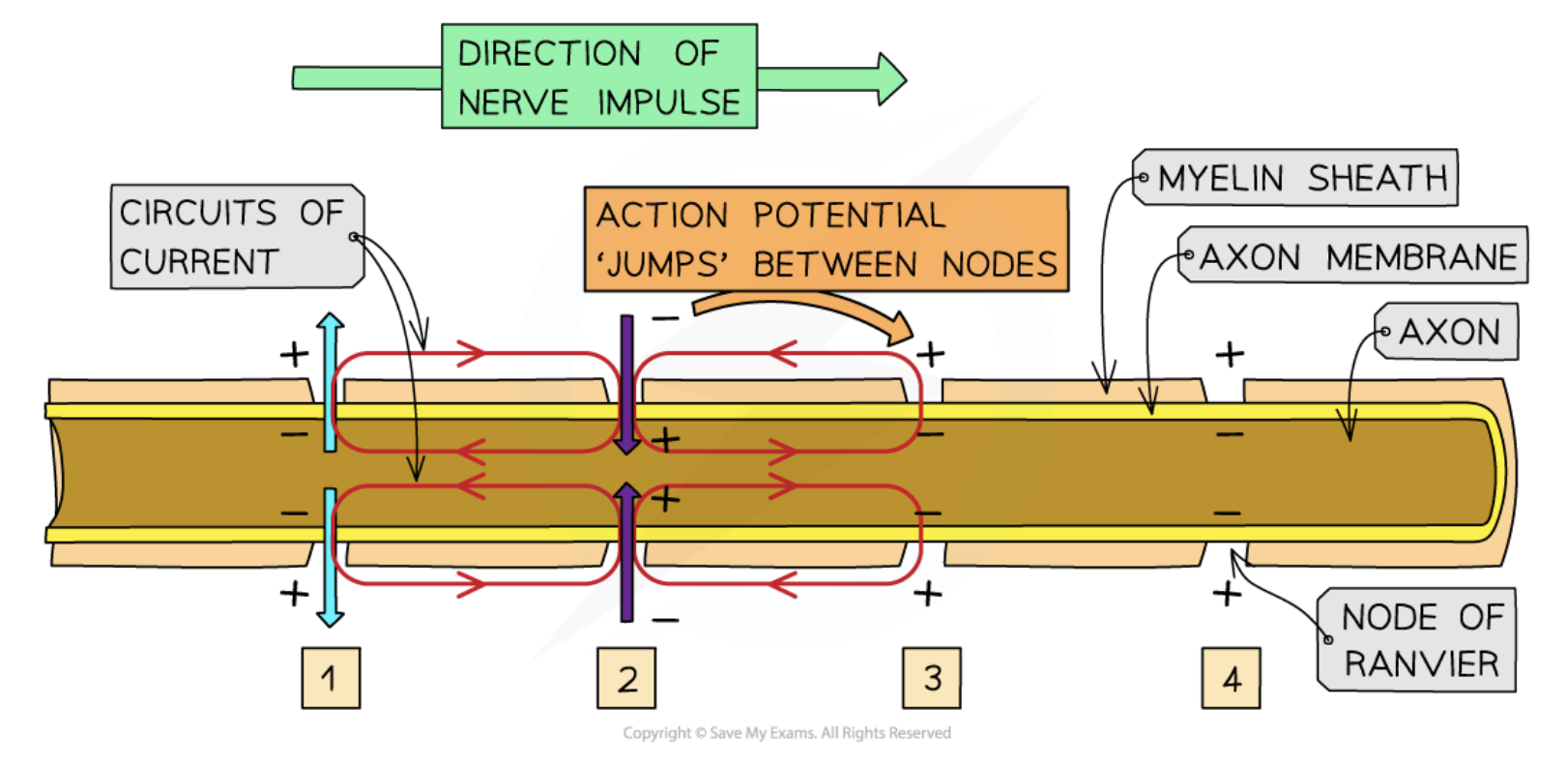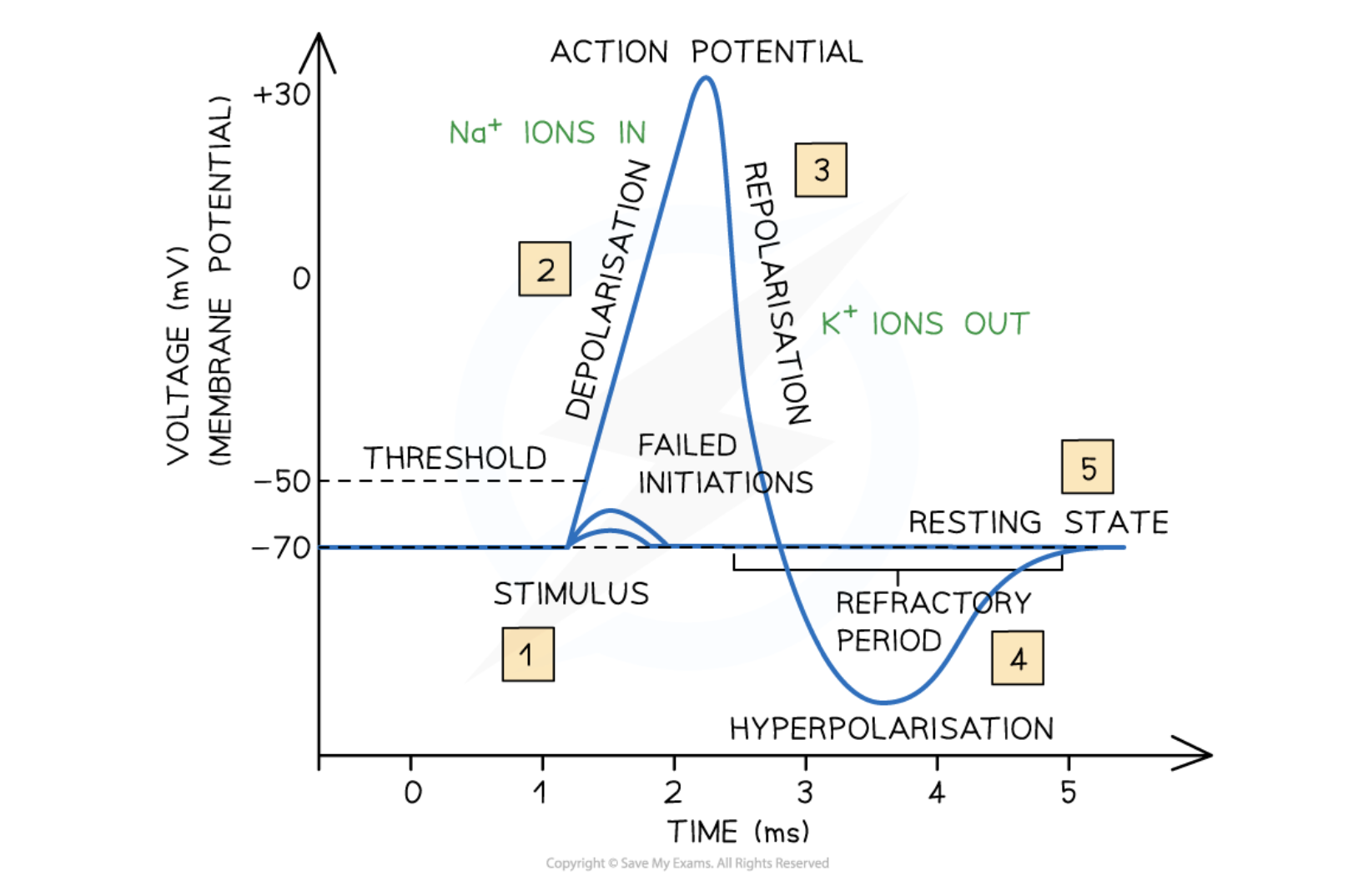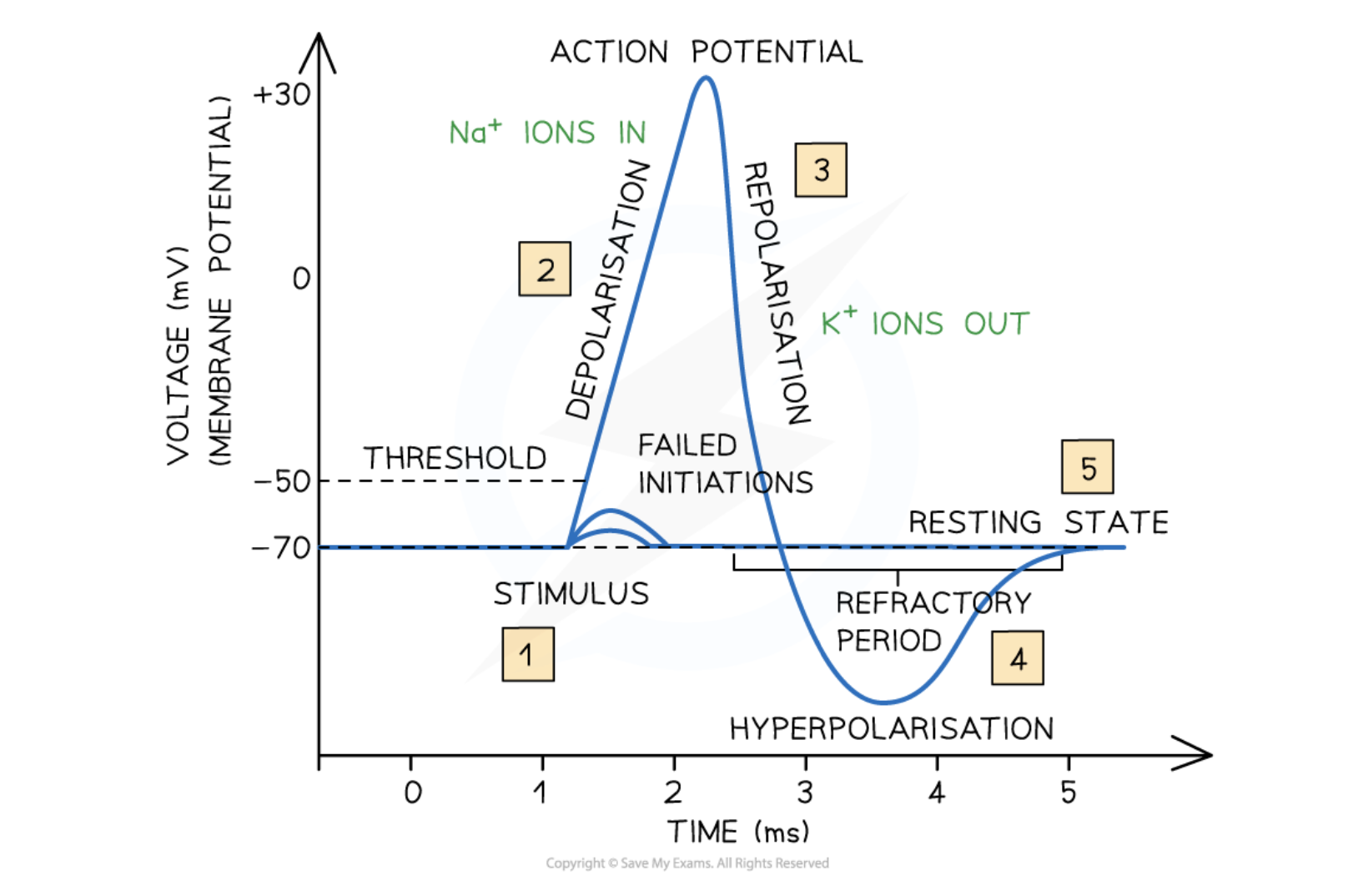(CIE A2 Biology) Impulse conduction speeds + the refractory period (based on SaveMyExams notes)
1/9
There's no tags or description
Looks like no tags are added yet.
Name | Mastery | Learn | Test | Matching | Spaced |
|---|
No study sessions yet.
10 Terms
Speed of conduction of impulses
Refers to how quickly an impulse is transmitted along a neurone, influenced by myelination and axon diameter.
Myelination
The presence of a myelin sheath around the axon, increasing the speed of action potential transmission by preventing ion diffusion at the sheath.
Nodes of Ranvier
Small uninsulated sections of the axon where action potentials occur, allowing for saltatory conduction.
Saltatory conduction
The process by which action potentials 'jump' from one node of Ranvier to the next, increasing transmission speed up to 50 times.

Diameter of the axon
A factor influencing the speed of conduction; thicker axons allow for greater surface area and faster ion diffusion.
Refractory period
A period shortly after an action potential where the axon membrane is unresponsive to further stimulation as it recovers to the resting potential of -70 mV.

Repolarisation
The process of returning the membrane potential from +30 mV to the resting level of -70 mV after an action potential, involving the opening and closing of potassium ion channels.

Action potentials
Electrical impulses that occur in neurones, traveling along axons to transmit signals.
Ion diffusion
The movement of ions across the axon membrane, crucial for generating action potentials and repolarisation.
Maximum frequency of impulses
The highest rate at which action potentials can be transmitted along neurones, typically between 500 and 1000 per second.